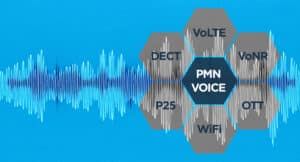In the past every mission critical organization also had their own communication network. These networks have been used for voice and also for some low capacity data connections. Proprietary radio networks are expensive to operate and from frequency utilization perspective they are wasting capacity. The positive part of a private network is that you have control of your own resources. Local control concept was introduced by PSCR to combine control of proprietary networks with general purpose networks.
Concept of Local Control means that there are several logical networks inside one physical network. Logical networks can be defined by geographical area, time, up and down link capacity and delay. As an organization you are given predefined performance templates to be used from non-public networks. In the Local Control portal you can assign resources yourself to your users, the same way receptionists give access to buildings for visitors, their own personnel, subcontractors etc..
Local control has several functions,
- Typically, the first function mentioned is priority management in crises. This means that you can change priorities between users manually or based on rules in congested networks to provide access to needed persons. This is important in very catastrophic situations but in our opinion it is not the most important feature.
- Key feature of Local control is access to services, not every user/app needs to have access to the same performance level at same time. In the Local control system you can actually make these selections by yourself whenever needed.
- Another key feature is availability to see network status in your own area. If there is a problem in the network of your own area, you are able to see the real time status. In the local control system you can also see where your users are in the network and how much capacity they are using and how much they are entitled to. Local control systems can also make sure that the network is not overloaded and SLAs are met.
- API to Local control allows profile changes to be made automatically. Changes can be related to time and location on dynamic bases. It is possible to create a geofence for example. One device can use a different profile based on the way it is used or the environment. The user does not need to be a human but also IoT applications can be managed by local control.
Local control gives control of the network to the organizations. This is mandatory in public safety, but it also provides significant cost saving opportunities for utility companies and it can be used to replace WiFi networks and even fixed ethernet cabling in factory and building automation. Just to give some ideas how to utilize Local control.






